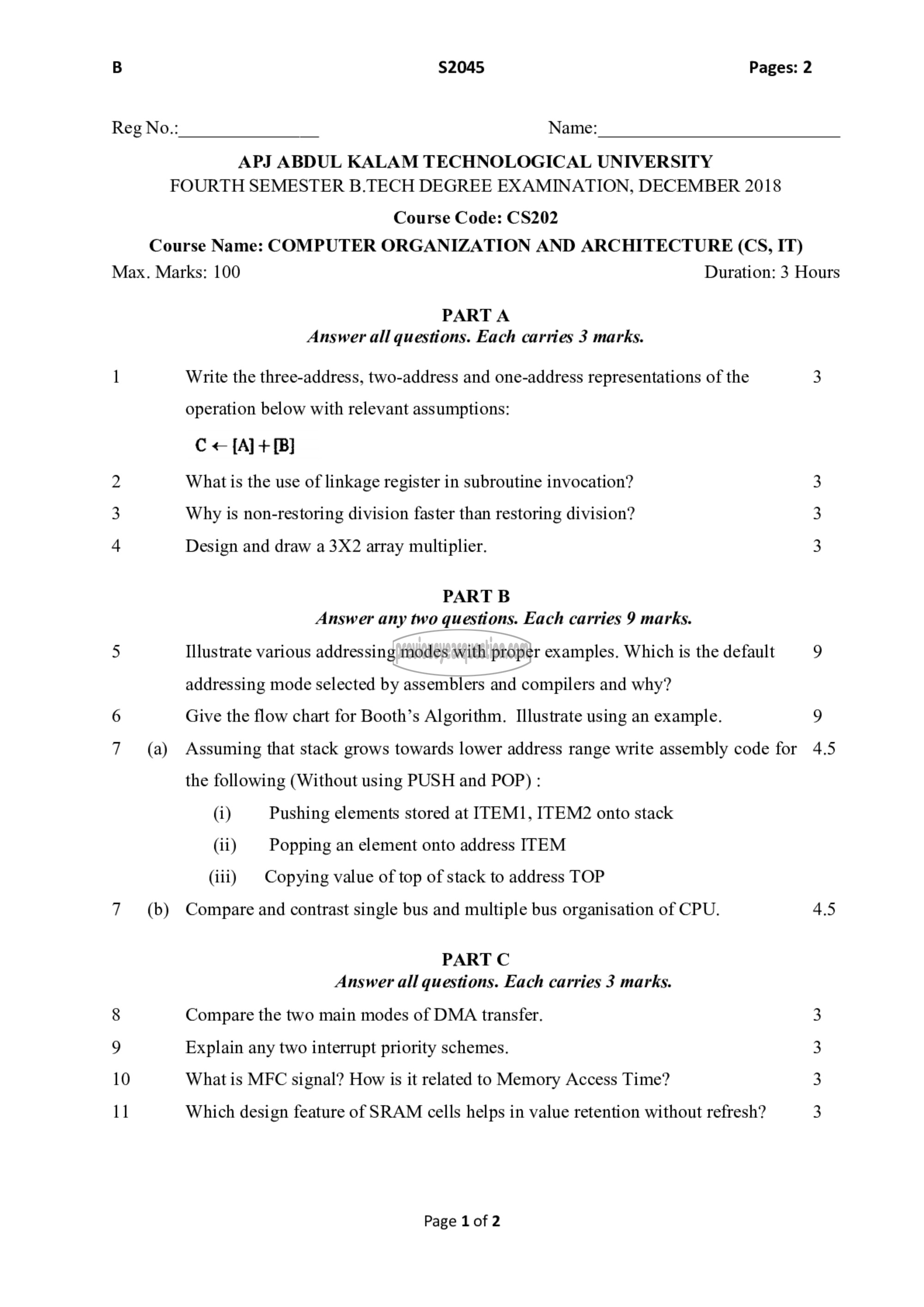APJ ABDUL KALAM TECHNOLOGICAL UNIVERSITY Previous Years Question Paper & Answer
Semester : SEMESTER 4
Subject : Computer Organization and Architecture
Year : 2018
Term : DECEMBER
Branch : COMPUTER SCIENCE AND ENGINEERING
Scheme : 2015 Full Time
Course Code : CS 202
Page:1
B $2045 Pages: 2
Reg No.: Name:
APJ ABDUL KALAM TECHNOLOGICAL UNIVERSITY
FOURTH SEMESTER B.TECH DEGREE EXAMINATION, DECEMBER 2018
Course Code: CS202
Course Name: COMPUTER ORGANIZATION AND ARCHITECTURE (CS, IT)
Max. Marks: 100 Duration: 3 Hours
PARTA
Answer all questions. Each carries 3 marks.
1 Write the three-address, two-address and one-address representations of the 3
operation below with relevant assumptions:
€ < [A] + [8]
2 What is the use of linkage register in subroutine invocation? 3
3 Why is non-restoring division faster than restoring division? 3
4 Design and draw a 3X2 array multiplier. 3
PART B
Answer any two questions. Each carries 9 marks.
5 Illustrate various addressing modes with proper examples. Which is the default 9
addressing mode selected by assemblers and compilers and why?
6 Give the flow chart for Booth’s Algorithm. Illustrate using an example. 9
7 (2) Assuming that stack grows towards lower address range write assembly code for 4.5
the following (Without using PUSH and POP) :
(i) Pushing elements stored at ITEM1, ITEM2 onto stack
(ii) | Popping an element onto address ITEM
(iii) | Copying value of top of stack to address TOP
7 (७) Compare and contrast single bus and multiple bus organisation of CPU. 4.5
PART C
Answer all questions. Each carries 3 marks.
8 Compare the two main modes of DMA transfer. 3
9 Explain any two interrupt priority schemes. 3
10 What is MFC signal? How is it related to Memory Access Time? 3
11 Which design feature of SRAM cells helps in value retention without refresh? 3
Page 1 of 2
